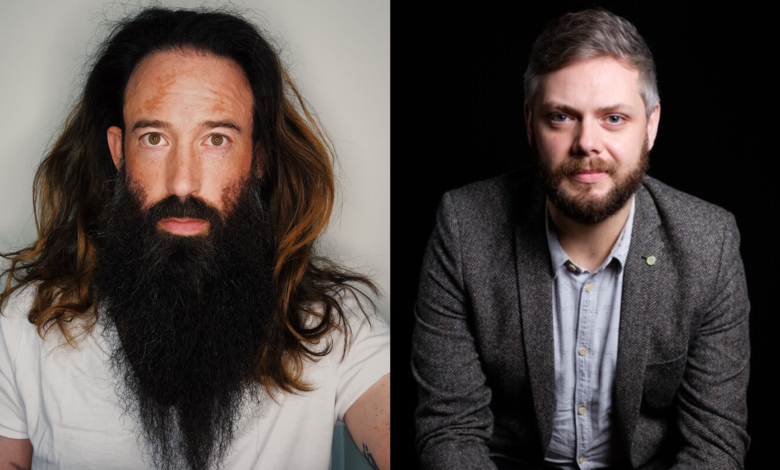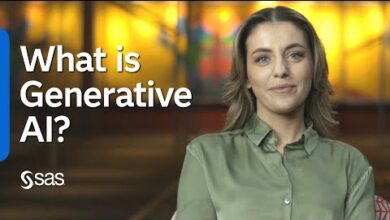Using AI to Allow Creatives to Do What They Do Best: Ahead of D&AD

“Do not go to any talk where someone says they’re an expert on AI,” jokes Rehab’s founder Tim Rodgers, as he explains what to expect from the team’s talk on the D&AD stage.
The agency works as a digital innovation partner for brands and with its own AI offering – RehabAI – leverages the tools available to create custom solutions for clients such as Google, Meta, Nike, Spotify and more.
“Modern creativity and modern development is incredibly complicated because you have to understand more about your audience, and the competition, and the brand you’re working for,” Tim says. “That’s just a lot of work because we’re creating so much data. That’s where AI can really come in and help to digest all of that.”
For Tim, it’s more about understanding the potential of the software, staying away from generative AI in the front end, and supercharging the talent and team which already exists at a company. “Our creativity process is almost hacking-based,” he goes on to explain, “where we continually build and make a creative process. Through that, we’ve actually learned the best ways to deploy and execute the software.”
Adding to that, Callum Gill the head of strategy at Rehab shares, “We’re building, with AI, to help service the needs of some big brands.” He further adds how AI has become, for them, a way to provide solutions for the various problems that their clients may face. Callum explains that it’s not about agencies talking about large language models (LLMs) questioning OpenAI or Gemini, that’s missing the point.
“As opposed to saying, ‘We’ve got an out-of-the-box solution that operates on OpenAI and you can just plug in and go’,” Callum shares how the Rehab team innovate to build tools which are specifically designed for each team, to support them with business needs and work to figure out solutions. “We build it bespoke, say here’s a look at how that’s done, and maybe from that you [the client] can see what you’re going to do with it yourself.”
Tim also explains how there’s a level of understanding you need before attempting to dive deeper into these bespoke solutions. Questions like, “What are the off-the-shelf products you can use to start to dabble and understand it?” are part of what they’ll cover at the D&AD talk. For him, experimentation is essential, “There’s no one-size-fits-all tool, every creative process is different, every company is different. You have to understand how your team is working in order for you to create tools, assistance and auxiliary systems that are supercharged.”
Callum goes on to explain how they’re expecting questions such as, ‘Why shouldn’t we be using gen AI tools at the production stage,’ and the answers they have for those who are curious about these questions. Their talk will explain some of the risks associated with these applications, as well as how the software still has much evolution to go through.
Other questions such as ‘Which models should we use?’ and ‘What are the differences between them?’ are what they’re prepared to answer during the talk, with tangible examples and explanations such as, as Callum explains, “Some of the models are better at handling multimodal input, and some of them are better for content output.” So there’s plenty to delve deeper into.
“It’s not about replacement, it’s about enhancement,” says Tim. “We should think of AI as our AI assistants, that we’re making them part of the team, like you would a creative partner. We have strategy, insight partners and they’re designed to let the teams understand more about the consumers.” In this way, the aim is to get the most information and intelligence from these AI solutions to create groundbreaking work.
As concerns around the legal implications of generative AI continue to be part of the conversation, as well as people growing increasingly concerned about losing their jobs to the tech, Callum has a reassuring word or two. “If you use AI to replace humans in this space, you’re not actually gaining anything, You’re treading water. More than anything else, if you keep the people that you’ve got and enhance them with AI, then you’re making massive gains.”
“Let teams do their best work,” Tim follows up with, “We can offload some processes to AI agents, which frees up people’s time, improves productivity and improves the happiness and output of the work.” And Callum agrees with this, “How can we free up creatives in their process more to do the things and the work that they do best?” He explains how often the measurement of good work comes from the eyes that reach it, rather than the quality of the work itself, and that really, creatives should focus on the ideas and the creative process.
“Every single project that I’m working on incorporates AI,” explains Callum when explaining the strategy side of things. “There’s a big difference between going to a talk to hear what you should do and going to a talk to hear what you can do.”



